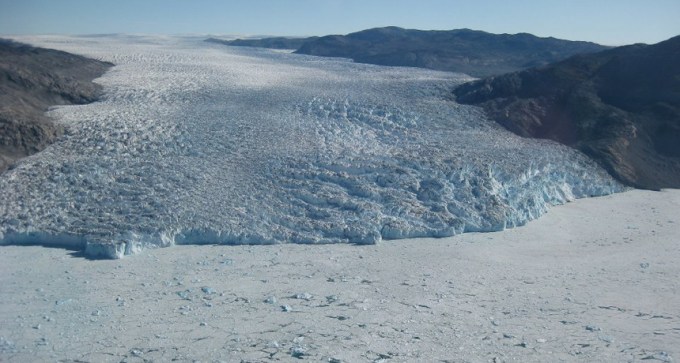Science News Magazine: Current Issue
Vol. 183 No. #11
Trustworthy journalism comes at a price.
Scientists and journalists share a core belief in questioning, observing and verifying to reach the truth. Science News reports on crucial research and discovery across science disciplines. We need your financial support to make it happen – every contribution makes a difference.
More Stories from the June 1, 2013 issue
-
 Humans
HumansGroup size affects racial makeup of friend groups
Larger settings seem to promote segregation, simulation finds.
-
 Life
LifeInfants, whether mice or human, love to be carried
Being toted around calms and quiets babies of both species.
By Meghan Rosen -
 Psychology
PsychologyDisputed signs of consciousness seen in babies’ brains
Within five months of birth, infants produce a possible neural marker of being aware of what they see.
By Bruce Bower -
 Health & Medicine
Health & MedicineCircumcision changes penis biology
Altered mix of microbes might reduce susceptibility to viral infections.
By Nathan Seppa -
 Life
LifeMutation makes H5N1 flu lose its grip
Laboratory-added genetic change makes avian influenza unable to bind to bird cells.
-
 Earth
EarthEarly Earth’s chlorine blown away by giant impacts
Low levels of chlorine on planet's surface have long puzzled scientists.
By Erin Wayman -
 Humans
HumansWeb searches for money words anticipate market moves
Dow drops follow weeks when more people search Google for ‘debt’ or ‘stocks.’
-
 Humans
HumansMaya civilization’s roots may lie in ritual
Cultural exchanges in southern Mexico and Guatemala tied to ancient society's rise.
By Bruce Bower -
 Life
LifeSigns of culture in whales and monkeys
Mammals learn feeding behaviors from their friends and family members.
By Meghan Rosen -
 Health & Medicine
Health & MedicineHookah smoking delivers carcinogens and carbon monoxide
Water pipes deliver carcinogens, nicotine and carbon monoxide to the user, a study finds.
By Nathan Seppa -
 Health & Medicine
Health & MedicineBrain measurements predict math progress with tutoring
The size and connections of a brain structure associated with memory formation predicted learning ability in 8- and 9-year-old children.
By Meghan Rosen -
 Life
LifeGenetic fossils betray hepatitis B’s ancient roots
Modern bird genomes reveal evidence that virus is at least 82 million years old.
-
 Tech
TechRecreating the eye of the fly
Inspired by insect vision, camera with 180 linked lenses captures panoramic views.
-
 Physics
PhysicsCounting cracks in glass gives speed of projectile
There is a simple relationship between an object's velocity and the number of spokes it leaves in a dinged windshield or fractured windowpane.
By Andrew Grant -
 Humans
HumansCannibalism in Colonial America comes to life
Researchers have found the first skeletal evidence that starving colonists ate their own.
By Bruce Bower -
 Humans
HumansHuman ancestors had taste for meat, brains
A mix of hunting and scavenging fed carnivorous cravings of early Homo species.
By Bruce Bower -
 Animals
AnimalsWinged robots may shed light on fly aerobatics
After years of trying, researchers create flapping machines that can hover and perform rudimentary flight maneuvers.
-
 Health & Medicine
Health & MedicineHighlights from the Pediatric Academic Societies meeting
Highlights from the pediatrics meeting held May 4-7 in Washington, D.C., include adolescent suicide risk and access to guns, a reason to let preemies get more umbilical cord blood and teens' cognitive dissonance on football concussions.
By Nathan Seppa -
 Climate
ClimateIce loss from Greenland’s glaciers may level off
Simulation suggests long-term effect on sea level not as dire as some predictions.
By Erin Wayman -
 Life
LifeGut bacteria adapt to life in bladder
E. coli moving between systems may cause urinary tract infections.
By Meghan Rosen -
 Earth
EarthJapan’s 2011 earthquake upped Tokyo’s risk
Chance more than doubled that capital city will soon experience big temblor, researchers calculate.
By Erin Wayman -
 Climate
ClimateCarbon dioxide in atmosphere reaches landmark level
At 400 parts per million, greenhouse gas concentration is now higher than it has been for millions of years.
By Erin Wayman -
 Animals
AnimalsEmbracing the swarm
Entomologist Michael Raupp is enjoying Swarmageddon. The giant batch of cicadas began emerging from the ground in late April and will be heard in some northeastern states through June.
By Sid Perkins -

-

-

-

-
 Psychology
PsychologyClosed Thinking
Without scientific competition and open debate, much psychology research goes nowhere.
By Bruce Bower -

Letters to the editor
Fusion reactions It is not true that fusion packs the highest punch of any known energy-generating process (“Ignition failed,” SN: 4/20/13, p. 26). Matter-antimatter annihilation far exceeds it (Star Trek had it right back in the 1960s). I believe that under certain conditions, matter falling into a black hole can also yield more energy than […]
By Science News -

-
 Science & Society
Science & SocietyThe Girls of Atomic City
The Untold Story of the Women Who Helped Win World War II by Denise Kiernan.
By Sid Perkins
